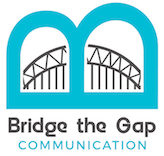If your website isn’t performing, you want to look at three main areas of your site, one of which is the website call to action.
- The copy to see if it’s customer-centric.
- Whether the design guides the user’s eye through the flow of the site and toward the most important information while breaking up text into readable snippets.
- Call-to-action website placement, language, and persuasiveness.
Companies that have spent a great deal on the design and copywriting of their websites often scratch their heads when those websites then fail to perform.
But there’s more to a good website than just looking and sounding great. It also needs to make things wildly apparent for visitors to know where and when to click.
I recently visited a website where I added an item to my cart. Then, I couldn’t figure out how to take the next step. How do I checkout? Can I view the items in my cart?
That’s an example of a poor call to action. You’ve probably visited an e-commerce website where there is a pop-up window after you add items to your cart. That window invites you to continue shopping or checkout.
Why Call to Action Website Copywriting Matters
There’s an important reason for call-to-action optimization. It guides the user in what they want to do next. You never want to discourage continued shopping, but you also can’t afford to make it too complicated to figure out how to complete the purchase.
Services businesses tend to struggle even more with strong calls to action. That’s because they don’t have any add-to-cart buttons or checkout buttons. Instead, these sites thrive on contact us or schedule a meeting buttons.
Let’s take a look at what makes for a strong call to action button and what your website might be lacking right now.
What is a Call to Action on a Website?
Any invitation to begin a relationship with the customer can be a call to action. Some examples include:
- Schedule a demo
- Subscribe to our email list
- Claim my free eBook
- Subscribe and save 10%
- Learn more
- Buy now
- Contact us
- Try for free
- Claim my free assessment
- Share your experience
- Leave a review
- Join now
HubSpot offers an inclusive list of call to action website examples. Read up on ways you can invite your followers to take the next step with you.
What Makes a Strong Call to Action?
A strong call to action is clear in what the user is getting from the click. The words on the button are actionable. And preferably, it uses a button instead of hyperlinked text.
While hyperlinked text shows you that there is something to click, it doesn’t invite the click in the same way a button does. And it often doesn’t stand out on the page as clearly as a button.
Avoid terms like “Click Here For Your Copy.” This is not descriptive language or motivating language. Instead, try something like “Get My Copy Now.”
This more actionable language tells the user what they are getting for clicking and also triggers a part of the brain that instructs action.
So as you review your website calls to action, pause and look at the language and presentation of these buttons. Ask yourself these two questions.
- Are my calls to action clear and in button format or hidden hyperlinked text?
- Can I make my call-to-action language stronger, clearer and more motivating?
How Cluttered Calls to Action Impact Results
If your website is cluttered with calls to action, you’ll make it even harder for your visitor to know what to do next. One of the easiest website call to action best practices to implement is to go through and simplify the number of calls to action on a page.
The more calls to action you have on a page, the more you divide your visitor’s attention and make them question what to do next.
Go through your website page-by-page to look for opportunities to simplify your calls to action. Remove hyperlinked text and allow just one or two bold calls to action per page to really stand out in your marketing.
Ask your website copywriter to review your calls to action to get an outside expert opinion.
At Bridge the Gap Communication, we offer copywriting and digital marketing services to help your business succeed. Schedule a free consultation to learn how we can help make your website copy more motivating and strengthen your calls to action.
Website Call-to-cation Optimization FAQs
Learn more about website calls to action and how to optimize them for the best results.
What Is an Example of a Call to Action on a Website?
“Find out more” or “subscribe to our newsletter” are both calls to action. They invite the user to take the next step with your business.
What Are Good Examples of Calls for Action?
Using actionable terms that tell a user what they’ll get if they click will deliver the best results. For example, “Get My Copy” instead of “Click Here for a Copy.”
Why Is Call to Action Important on a Website
Having a call to action on your website is important because it guides the visitor to the next step with your business.

